In June of 2017, as I prepared to leave Izmir, my friend Esra gave me, as a gift, two jars of sea salt mixed with herbs and finely ground sun-dried vegetables. Handmade labels indicated this was salt from the Gediz Delta (a large river delta on the Bay of Izmir) and that “Zeytinci” Fadime had prepared the mix. Esra herself, she told me, helped her friend Fadime abla, an experienced organic farmer who lives in one of the former Greek Orthodox villages at the edge of the Gediz Delta, not far from the city of Foça. The vegetables were from Fadime’s garden, and the salt from the delta’s saltpans, Çamaltı.
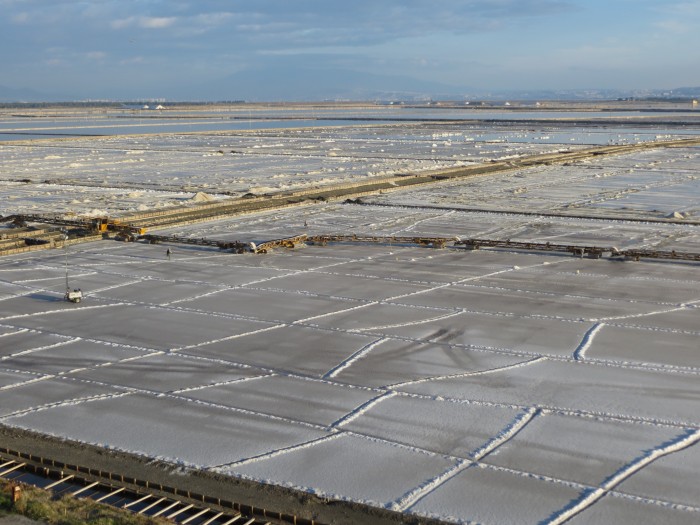
They labeled the herb salt, Esra explained, as a way of raising awareness of the Gediz Delta, and donate one share of their profit to Doğa Derneği, a national environmental NGO that advocates for the delta.
In the days following my departure, Esra invited me to participate in a new social media campaign, tagged #flamingomadokunma, meaning “don’t touch my flamingo.” The campaign formed in opposition to a kilometers long bridge crossing the bay of Izmir, including a tunnel and an artificial island in the shape of a moon and star — Turkey’s flag. The large-scale infrastructural intervention is expected to result in the destruction of habitats and biodiversity of the lower Gediz Delta, at the boundary of a Ramsar wetland conservation area.
The bridge had been the talk of the town for more than a decade, and candidates proposed it in several municipal election campaigns—but citizens and planners in Izmir largely opposed it or deemed it incongruent with the city’s transportation needs. But by 2016, a series of meetings in Izmir announced that construction would be imminent. In the spring of 2017, the project’s Environmental Impact Assessment (EIA) was approved. Following that, in June, three NGOs and 85 citizens filed a lawsuit against the approval of the EIA. The NGOs also noticed that the boundaries of the wetland conservation area in the Gediz Delta had been redrawn, downgrading the protection status of one area next to the proposed project.
In all this, the flamingo became a charismatic symbol of advocacy for the Gediz Delta’s varied livelihoods, human and nonhuman. Scientists estimate that about one-third of European flamingos breed in the marshes of Izmir’s Gediz Delta. Thousands of flamingos feed in the shallow water flats, and many dwell in the Çamaltı saltpans. In the salt complex—recently taken out of state monopoly and privatized—is an artificial nesting island for flamingos. The construction of the island—the only one of its kind in the world, according to local conservation scientists—was commissioned by the municipal authority charged with managing the Gediz Delta wetland conservation area (until spring of 2017, when their agreement with the National Parks and Nature Conservation department was terminated).
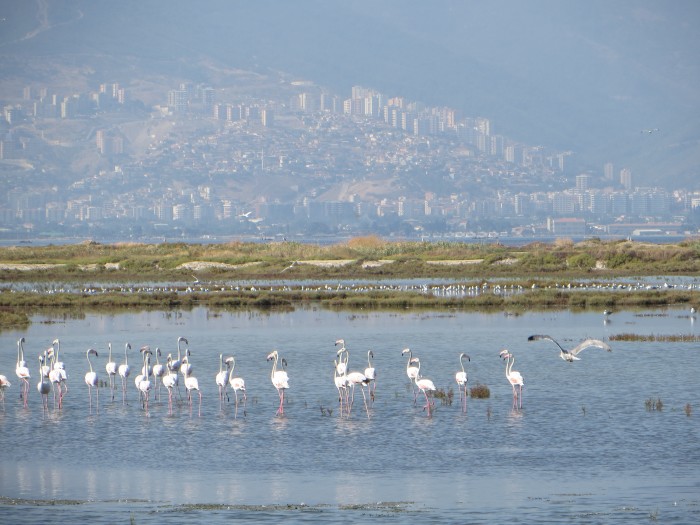
I often went to observe flocks of flamingos feeding in the coastal marshes of the bay, biking on the northern shores of the city of Izmir, past the neighborhood of Mavişehir, continuing along the coast toward the wastewater treatment facility, and then stepping through a hole in the wired fence leading into the marshes. Young men gather mussels in the shallow waters, and tasty green salicornia (deniz borulcesi) on the shores, and flocks of sheep graze in the empty meadow next to the wastewater plant. In the haze, the luxury condos of Mavişehir, give way to Izmir’s hillsides, covered in residential high-rises. Closer to the wetlands, two empty buildings stand guard—environmental NGO took the developers to court, for the buildings stand on protected wetlands, and construction halted.
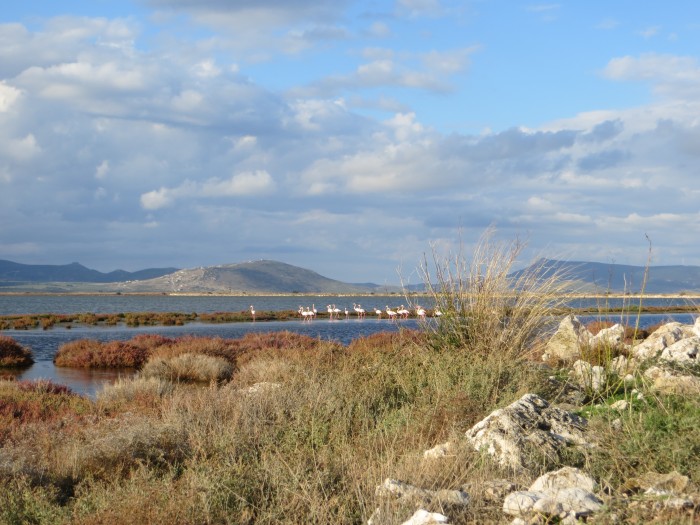
Whether in the saltpans or in the industrial and residential expansion toward the delta’s marshes, the lives of the flamingos are shaped by infrastructural form and politics—and become a symbol for human livelihood and its ecological entanglements. For instance, In October 2013, a platform of residents in Mavişehir staged a “funeral for the birds” to protest a planned residential expansion on the nearby marshes. They carried a makeshift casket for a flamingo—made of carton paper.
Back to Esra’s gift. If the salt was a synecdoche for the Gediz Delta and residents’ struggles for livable natures (with flamingos as their charismatic symbol), the crushed vegetables in the jar also carry a significance of political ecology for Esra and her friends. With her husband, Fadime grows heirloom vegetables and organic olives, which they sell in Izmir. The year before, I visited their small farm with Esra, and we spent the day planting tomato, pepper, eggplants, zucchini, and pumpkin seeds in the makeshift nursery. Fadime grows five times as many seedlings as she can plant in her fields, and gives out rest to other farmers and seed activists.
In Turkish, heirloom seeds, reproduced through open pollination (as opposed to hybrid or genetically modified), are yerel tohum—meaning, literally, “local seed.” And, indeed, seeds always carry stories—about community, temporality, and ideas of locality. In 2006, market sales of heirloom seeds were prohibited. Growers, in response, set up seed-exchange festivals and nonmarket exchanges. Then, government officials announced that, starting in 2018, the sale of nonhybrid varieties would be outlawed.
Seeds, salt, and flamingos come together in configurations of agricultural production, industrial infrastructure, and environmental governance in the Gediz Delta. The salt jar was also an articulation of claims about space, ecology, and livelihood in contemporary Turkey that in my work I call “livable natures.” Starting in 2013, I studied the emerging interest in wetlands in Turkey—the Gediz Delta is one of the largest—as sites of human and nonhuman naturecultures (doğakültürü, as environmental activists at the NGO I observed, Doğa Derneği, say), for different social groups. Fishers, farmers, activists, scientists, and state officials all held different visions of what wetlands (in contemporary Turkish, sulakalan) are or ought to be.
The term sulakalan itself came into among conservation and agriculture experts after a series of international conferences in the 1960s in which Turkish state officials and scientists participated. Turkey joined the international agreement for wetland conservation, Ramsar, in 1994, and wetland legislation passed starting in the early 2000s. But except for scientists, state officials, and environmental activists, my interlocutors all use other place names for indicating sites of water saturation, all of which are also listed as “wetlands”: for instance, sazlık (reed bed), göl (lake), longoz ormanı (swamp), batak (marsh), çorak (barren land), dalyan (fishing lagoon).
Recent changes to the wetland legislation in 2014 opened up new infrastructure development in conservation areas. Notably, as reported by environmental activists, the new law made it easier to drain 70 wetlands situated in the construction area of Istanbul’s third bridge. The bridge was completed and inaugurated in August 2016, despite decades-long activist organizing against its construction.
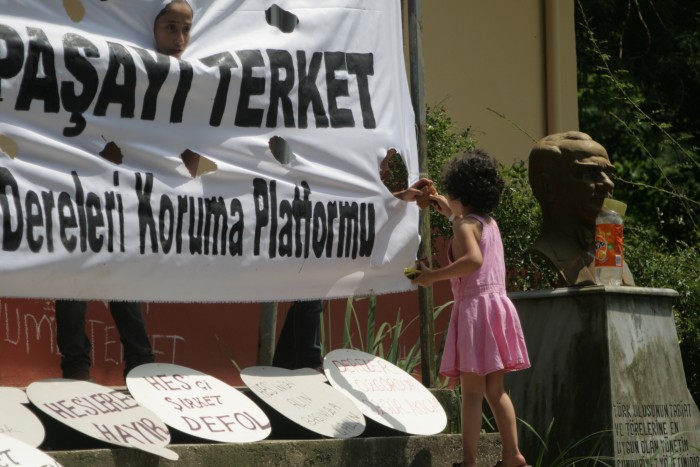
Debates about large-scale infrastructure, and its effects on social, cultural, and ecological formations, are a staple of political life in contemporary Turkey. Large-scale projects have been central to the political imaginaries of a Turkish national grandeur throughout the republic’s history (Bozdogan 2001; Bozdogan and Akcan 2013).
In recent years, grassroots movements have formed to contest the centralized planning and construction of infrastructure as varied as highways, bridges, shopping malls, urban renewal projects, thermal power stations, large and small dams, nuclear power plants, and airports (see, e.g., Adaman and Arsel 2005; Aksu et al. 2016; Arsel et al. 2016; Evren 2014; Knudsen 2016; Voulvouli 2009). Bilge Fırat (2016) has theorized contemporary Turkey as an “infrastructural state”: increasingly authoritarian rule benefits elite interest in energy production, construction, and transportation sectors, she argues, while violently hampering demands for livelihood, democratic accountability, and environmental sustainability.
Anthropologists often take ecology and infrastructure in dialectic: the two are theorized as interacting upon each other or in opposition: infrastructure is often seen as taming or reducing ecological life; or, alternatively, emergent ecologies thrive in the fissures and ruins of infrastructural interventions. Ashley Carse (2014) has offered a compelling historiography of “environmental infrastructure” as an environmental management concept and, at the same time, uses the term as an analytics for understanding ecologies as infrastructural constituted.
If we take ecology and infrastructure as cultural, material, and political formations, we can interrogate the way in which people make sense of their co-constitution in particular contexts. Reflecting on the environmental histories and futures of the Gediz Delta, for all my interlocutors, imaginaries and practices of delta ecology are inseparable from its infrastructure. Notions of ecology, then, are inflected by political discourses on infrastructure, and they have also been formed, materially, through infrastructure.
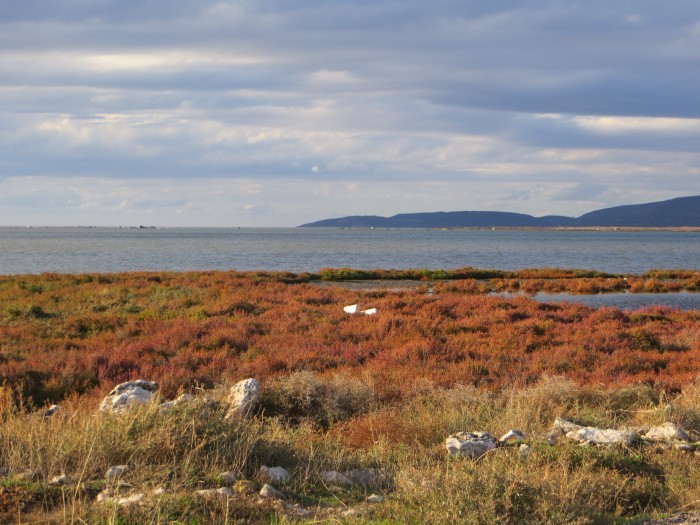
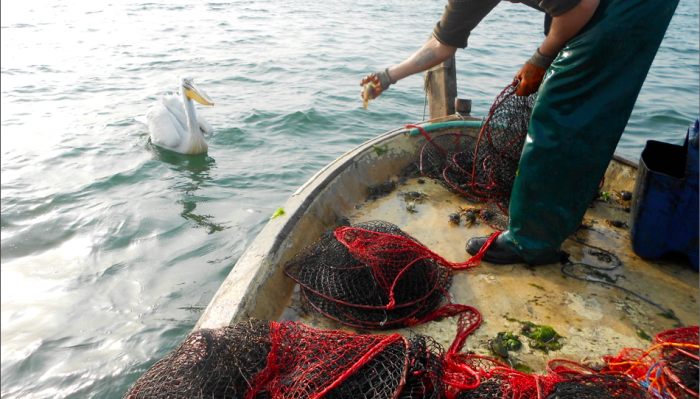
Caterina Scaramelli is a Robert E. Keiter ’57 postdoctoral fellow in anthropology at Amherst College. Her research examines the culture and politics of environments. Her current book manuscript, Liminal Ecologies: Making Wetlands and Livable Natures in Turkey, tracks the emergence of the category of the wetland and examines how a varied range of groups in Turkey are making and contesting sites of livability (human and nonhuman) in two coastal deltas. She teaches on the anthropology of environment, water, science, animals, and infrastructure.
References
Adaman, Fikret, and Murat Arsel. 2005. Environmentalism in Turkey: Between Democracy and Development? Aldershot: Ashgate.
Arsel, Murat, Bengi Akbulut, and Fikret Adaman. 2015. “Environmentalism of the Malcontent: Anatomy of an Anti-Coal Power Plant Struggle in Turkey.” Journal of Peasant Studies 42 (2): 371–395.
Aksu, Cemil, Sinan Erensü, and Erdem Evren, eds. 2016. Sudan Sebepler: Türkiye’de Neoliberal Su-Enerji Politikaları ve Direnişleri. Istanbul: Iletişim Yayınları.
Bozdogan, Sibel. 2001. Modernism and Nation Building: Turkish Architectural Culture in the Early Republic. University of Washington Press.
Bozdogan, Sibel, and Esra Akcan. 2013. Turkey: Modern Architectures in History. London: Reaktion Books.
Carse, Ashley. 2014. Beyond the Big Ditch: Politics, Ecology, and Infrastructure at the Panama Canal. Infrastructure Series. Cambridge, MA: MIT Press.
Evren, Erdem. 2014. “The Rise and Decline of an Anti-Dam Campaign: Yusufeli Dam Project and the Temporal Politics of Development.” Water History 6 (4): 405–419.
Firat, Bilge. 2016. “The Most Eastern of the West, the Most Western of the East”: Energy-Transport Infrastructures and Regional Politics of the Periphery in Turkey. Economic Anthropology 3: 81–93.
Knudsen, Ståle. 2016. “Protests against Energy Projects in Turkey: Environmental Activism above Politics?” British Journal of Middle Eastern Studies 43 (3): 302–323.
Voulvouli, Aimilia. 2009. From Environmentalism to Transenvironmentalism: The Ethnography of an Urban Protest in Modern Istanbul. Bern: Peter Lang.
Cite as: Scaramellia, Caterina. 2017. “Salt, Seeds, and Flamingos: On the Politics of Infrastructural Ecology in Turkey.” EnviroSociety, 23 August. www.envirosociety.org/2017/08/salt-seeds-and-flamingos-on-the-politics-of-infrastructural-ecology-in-turkey.
